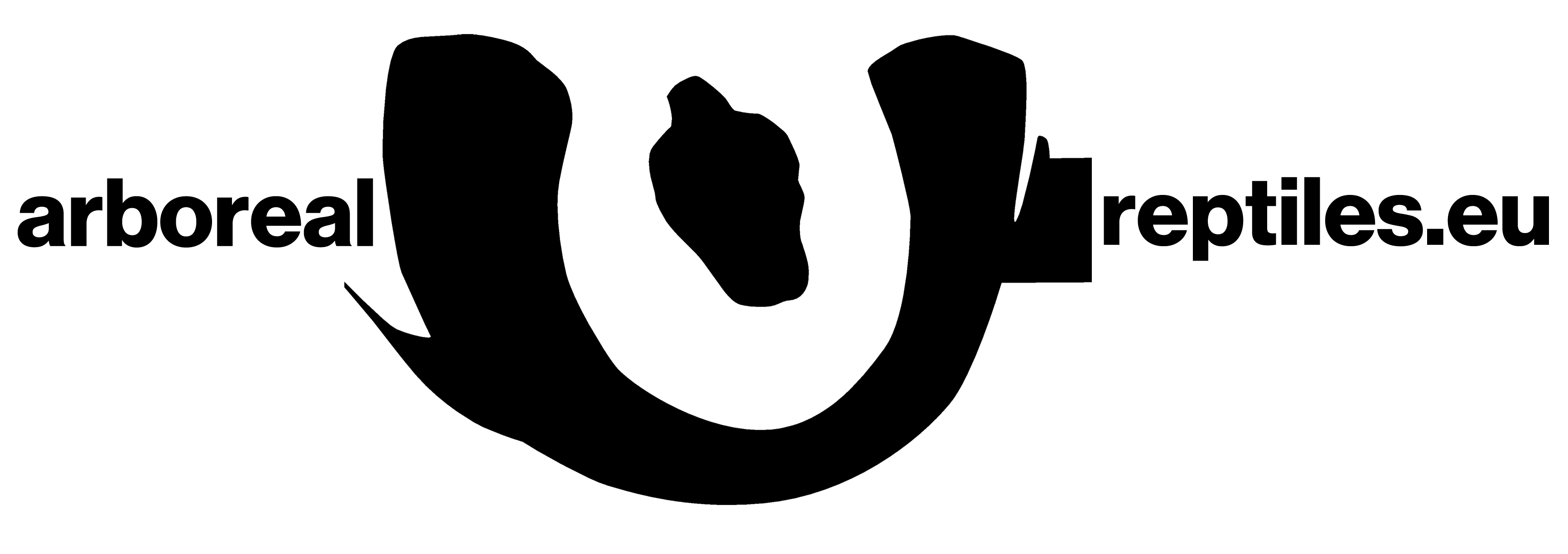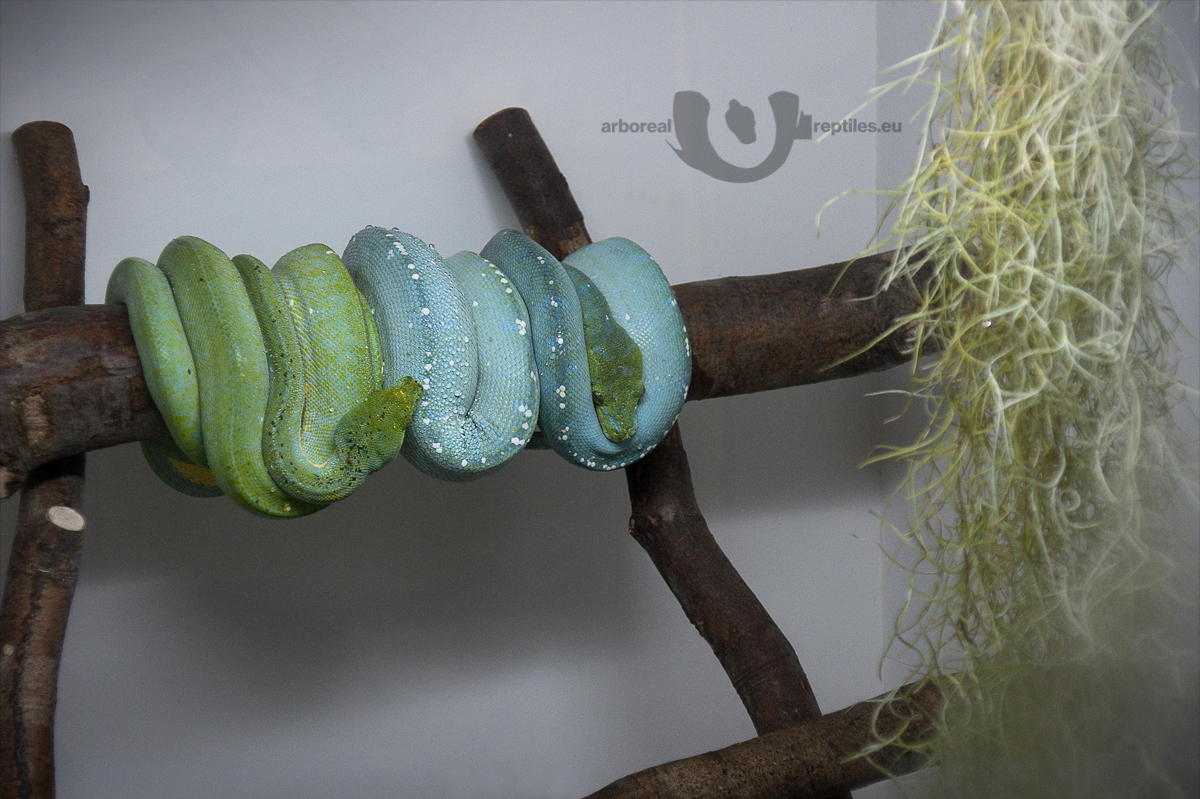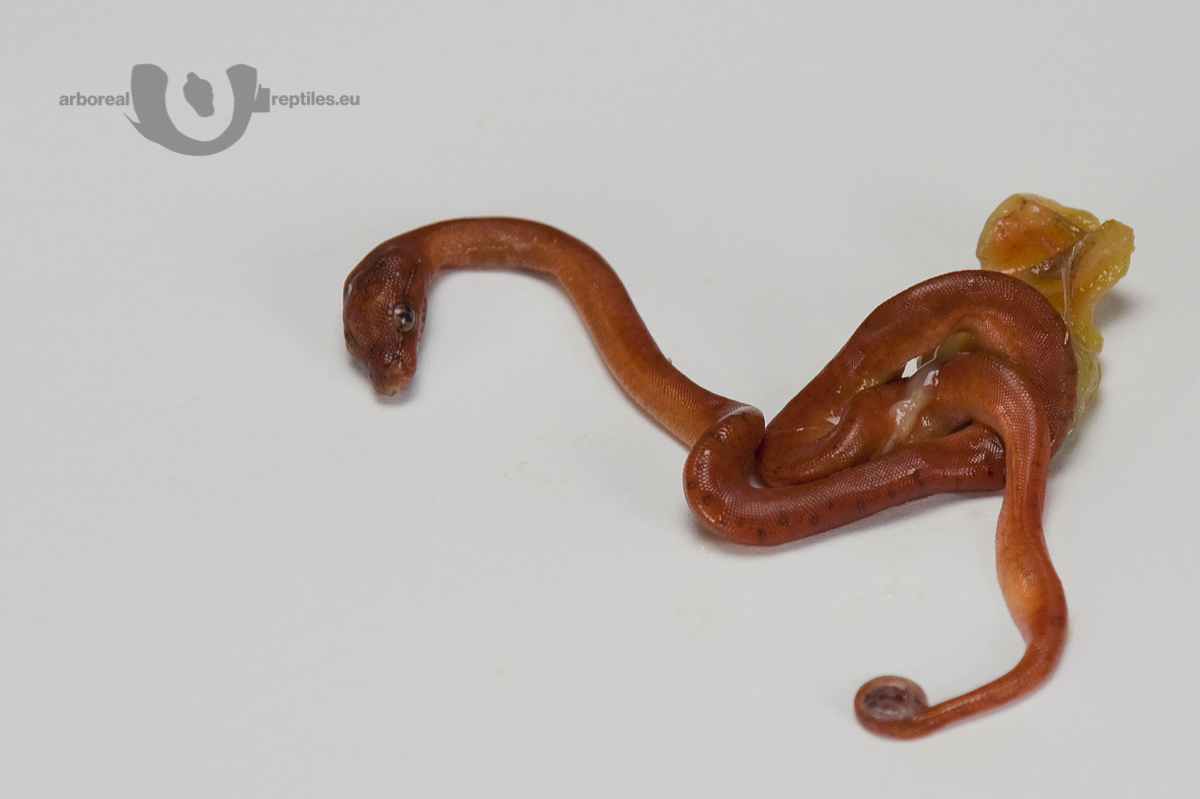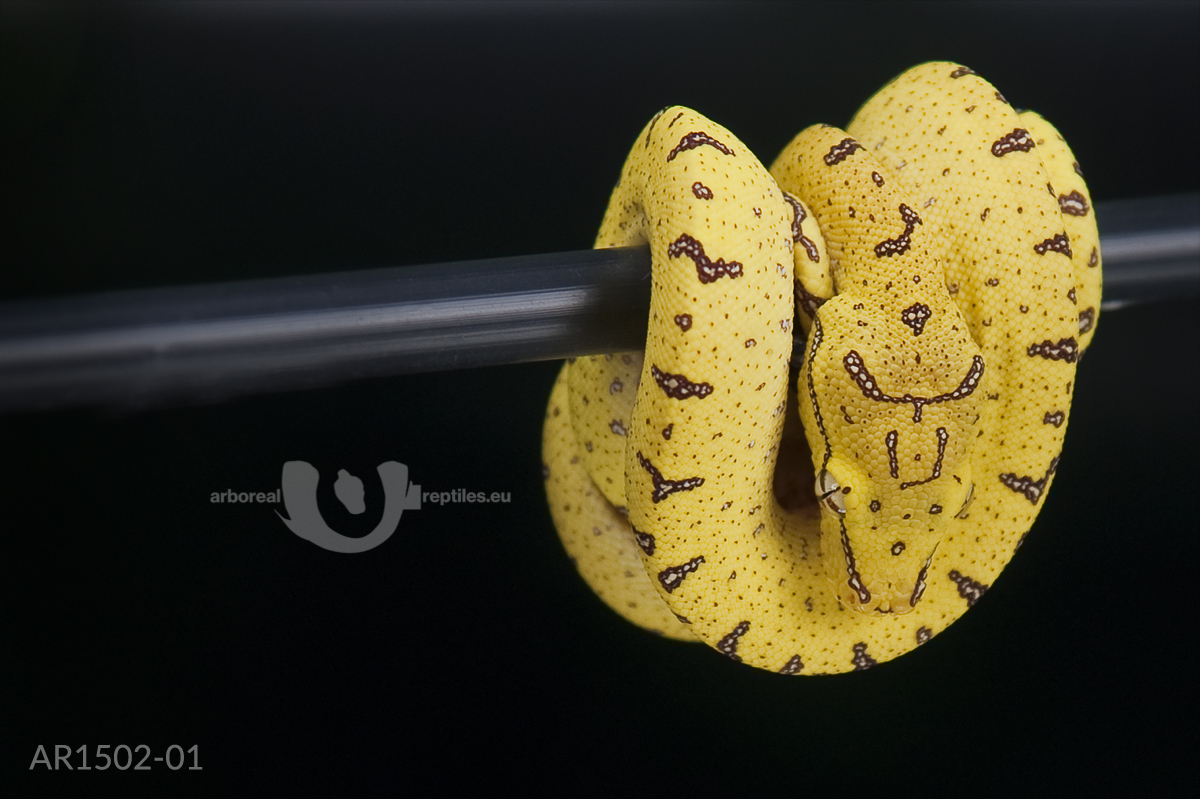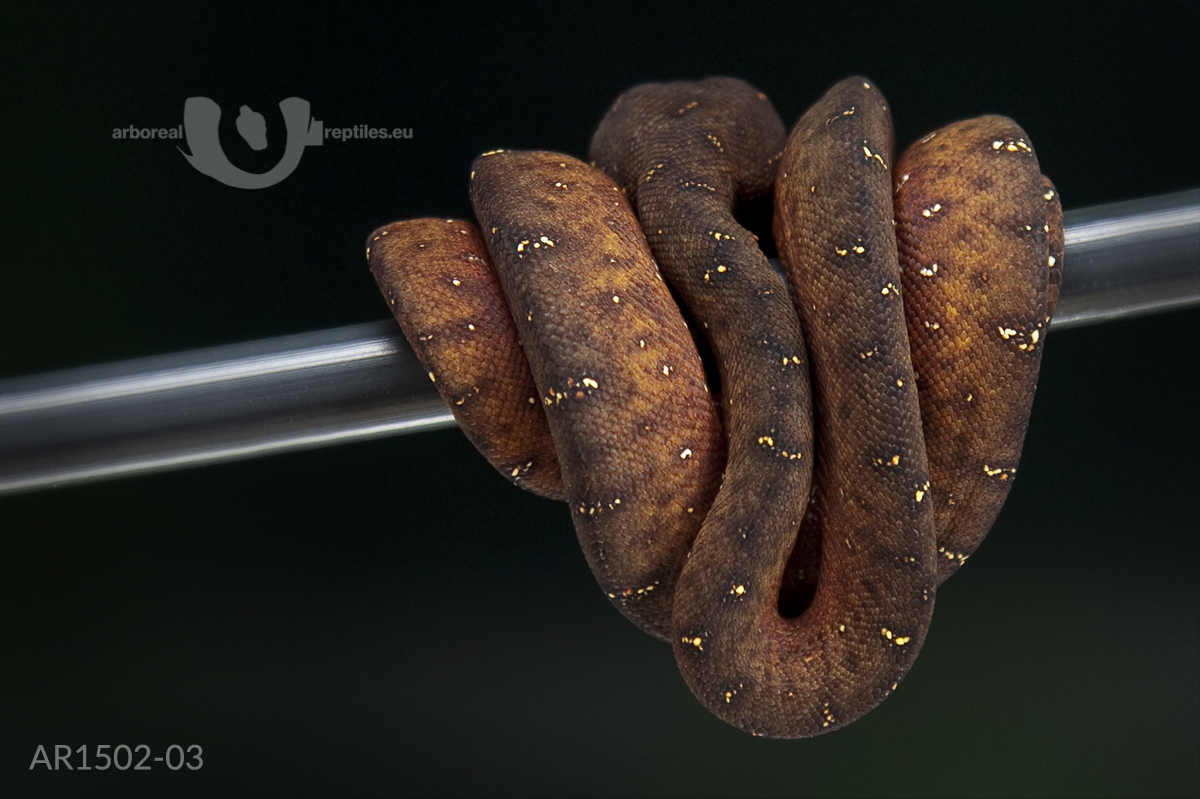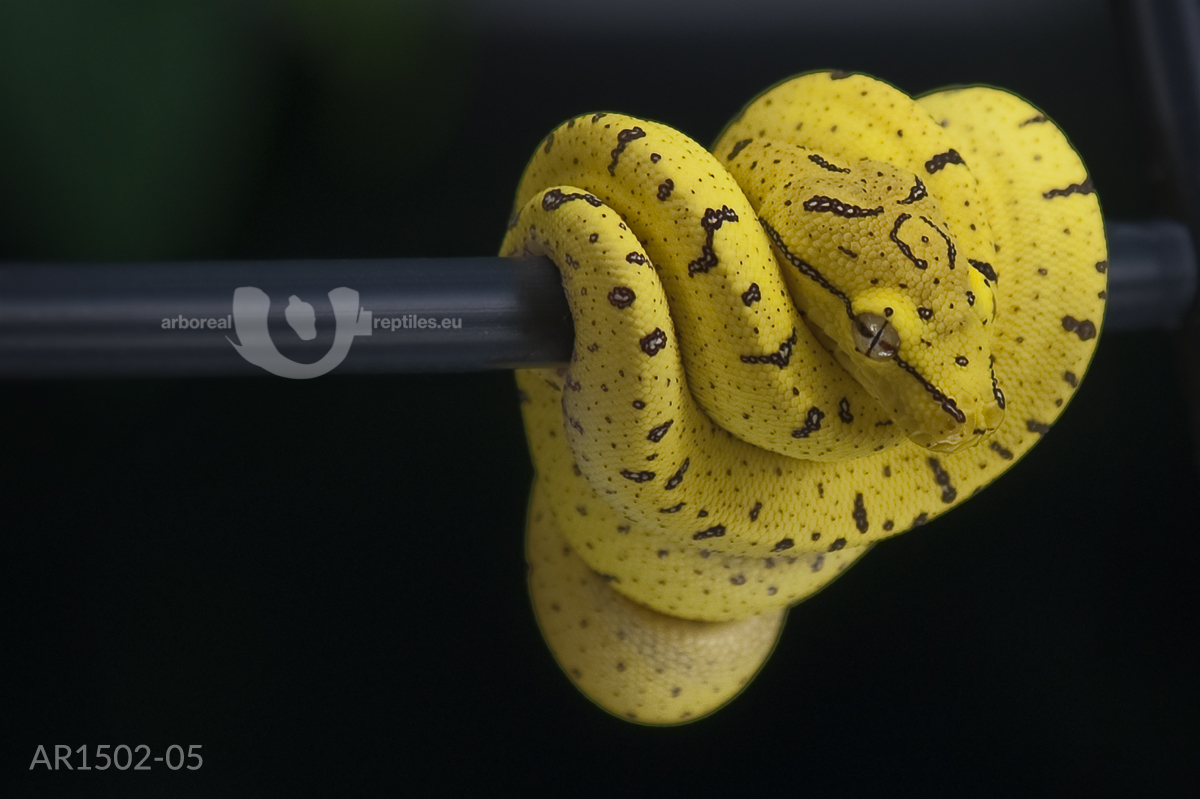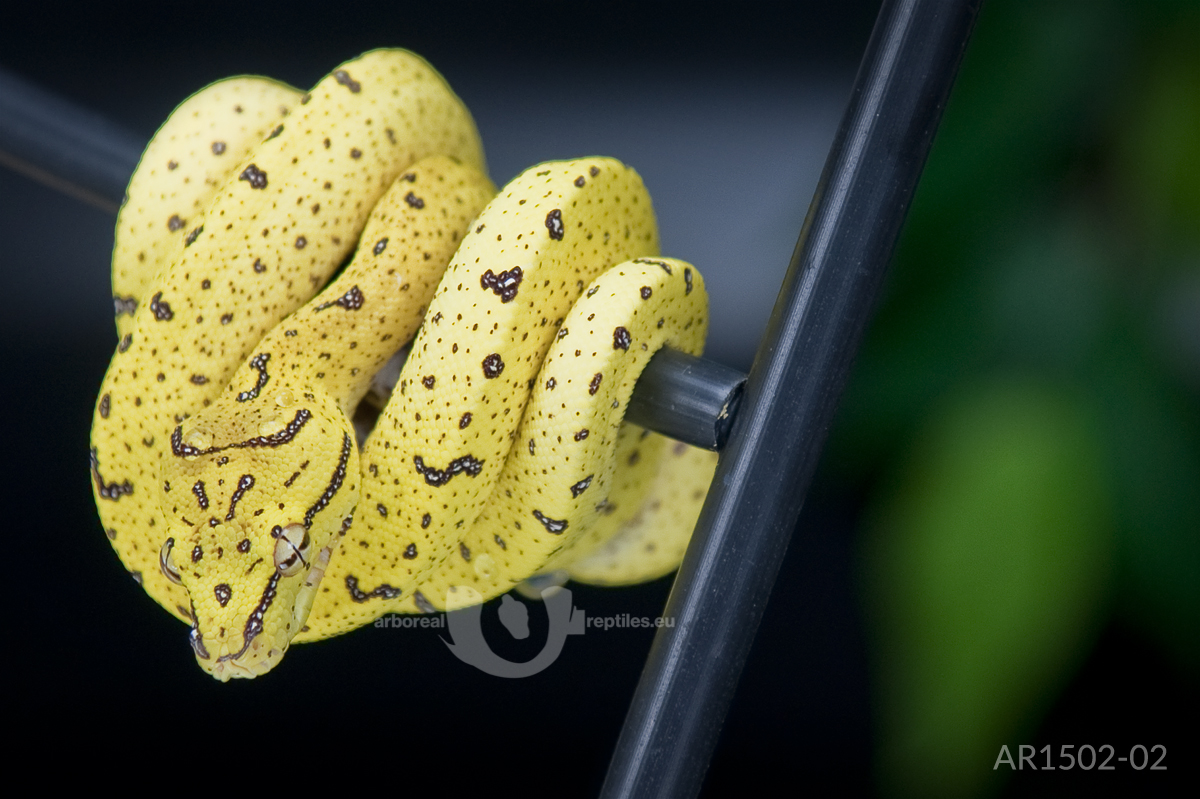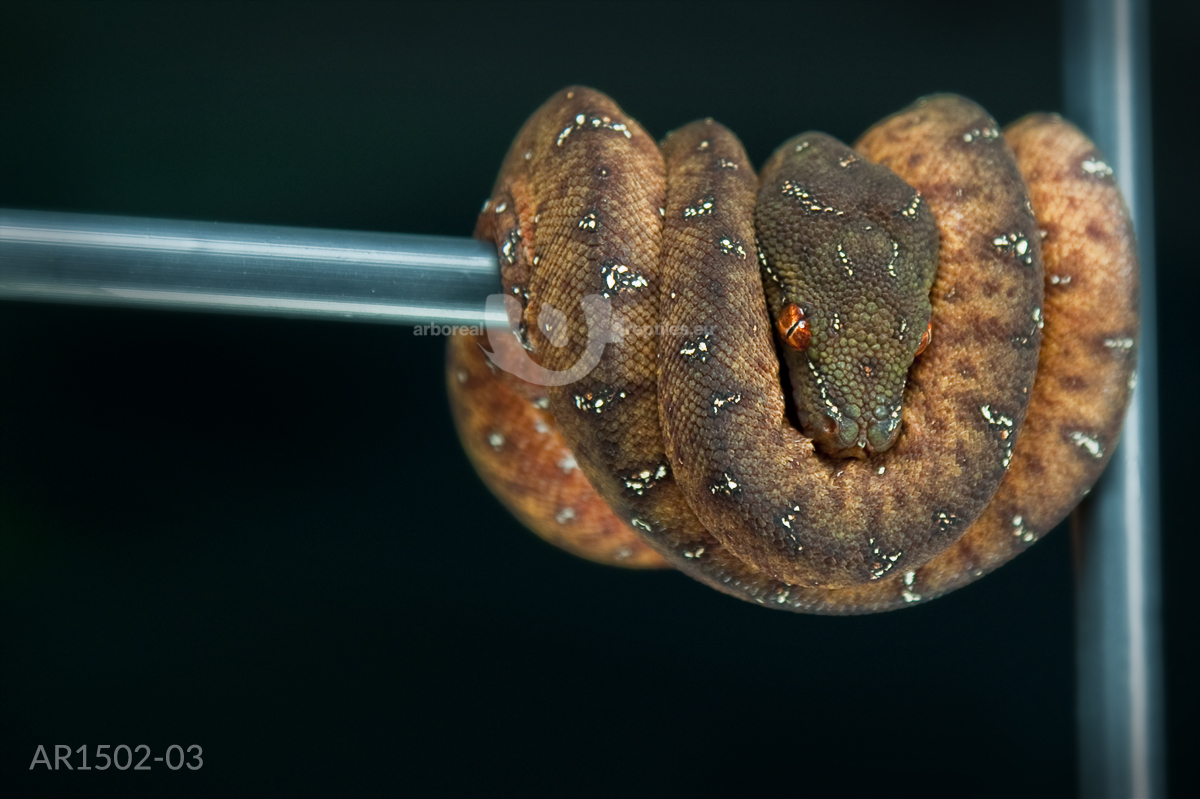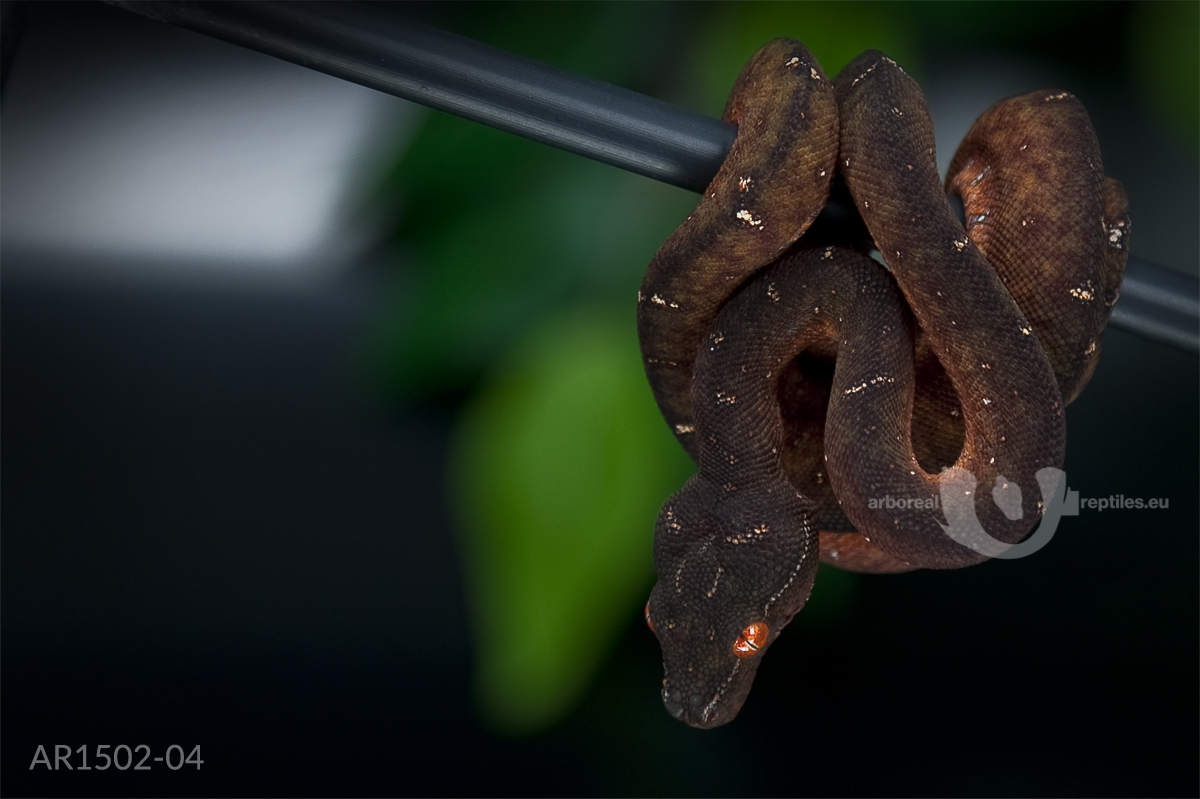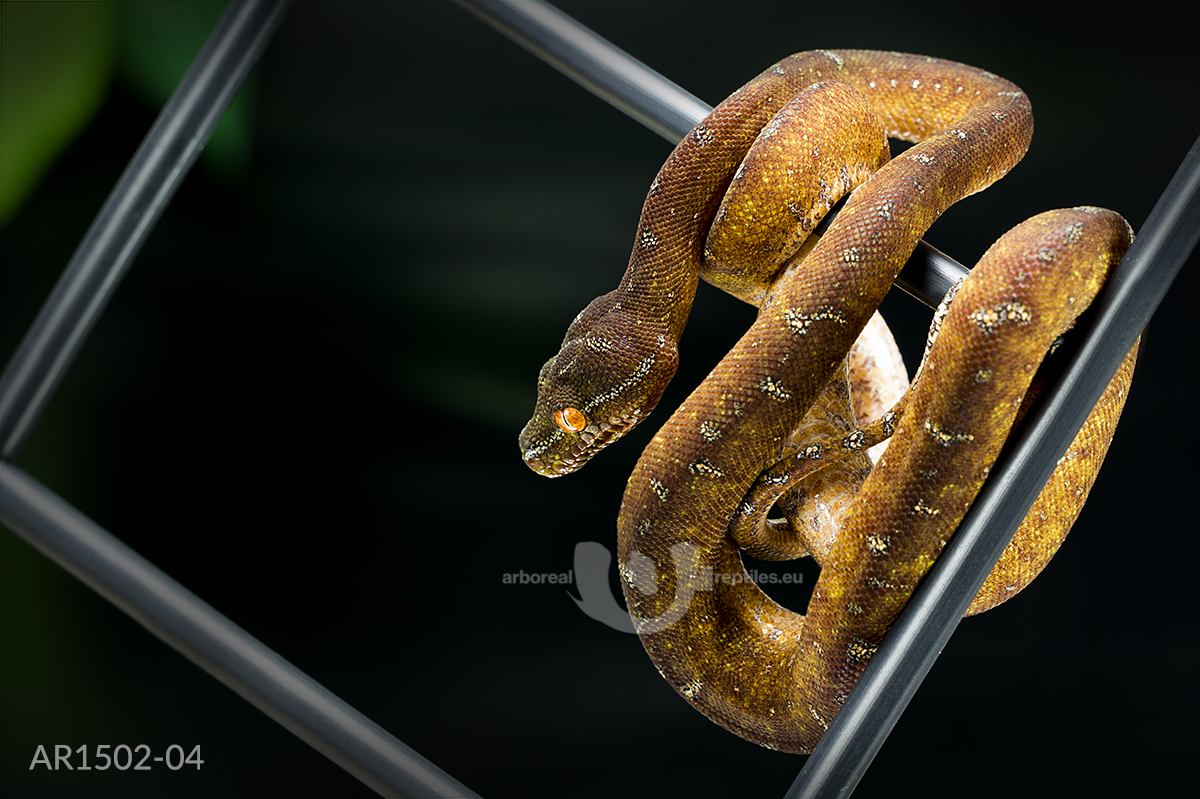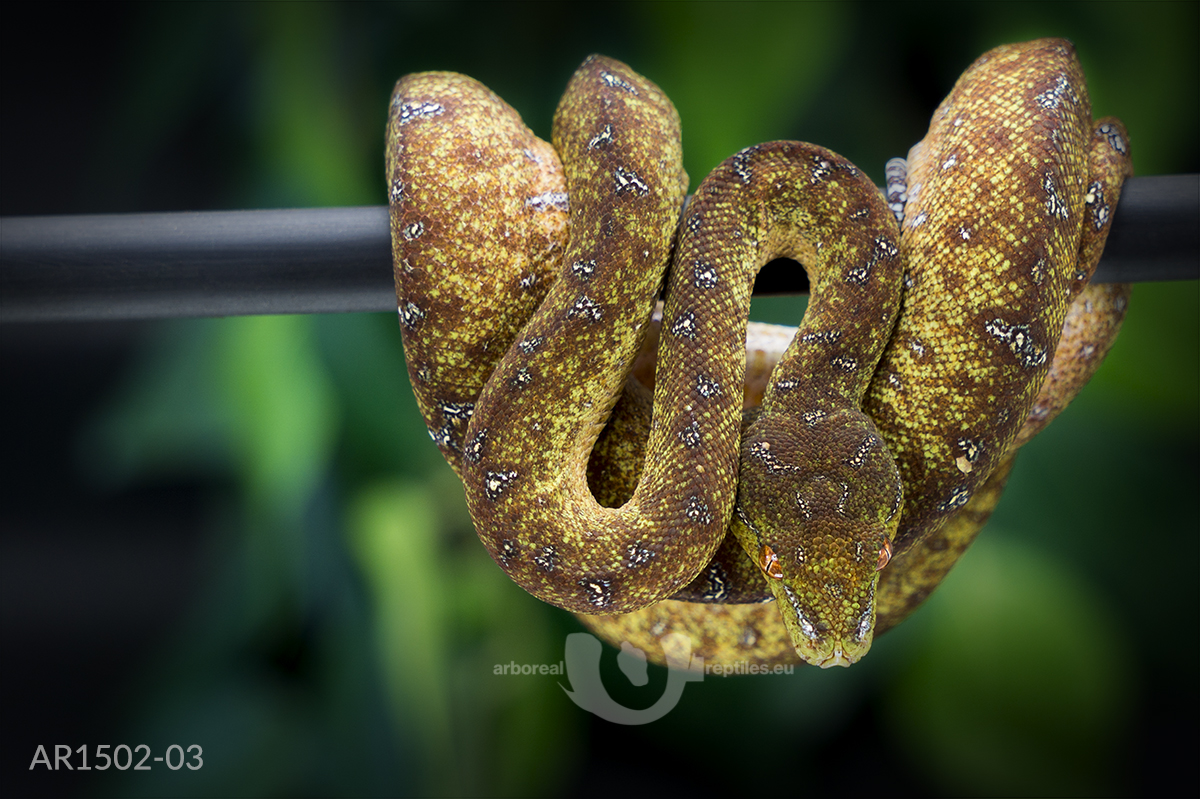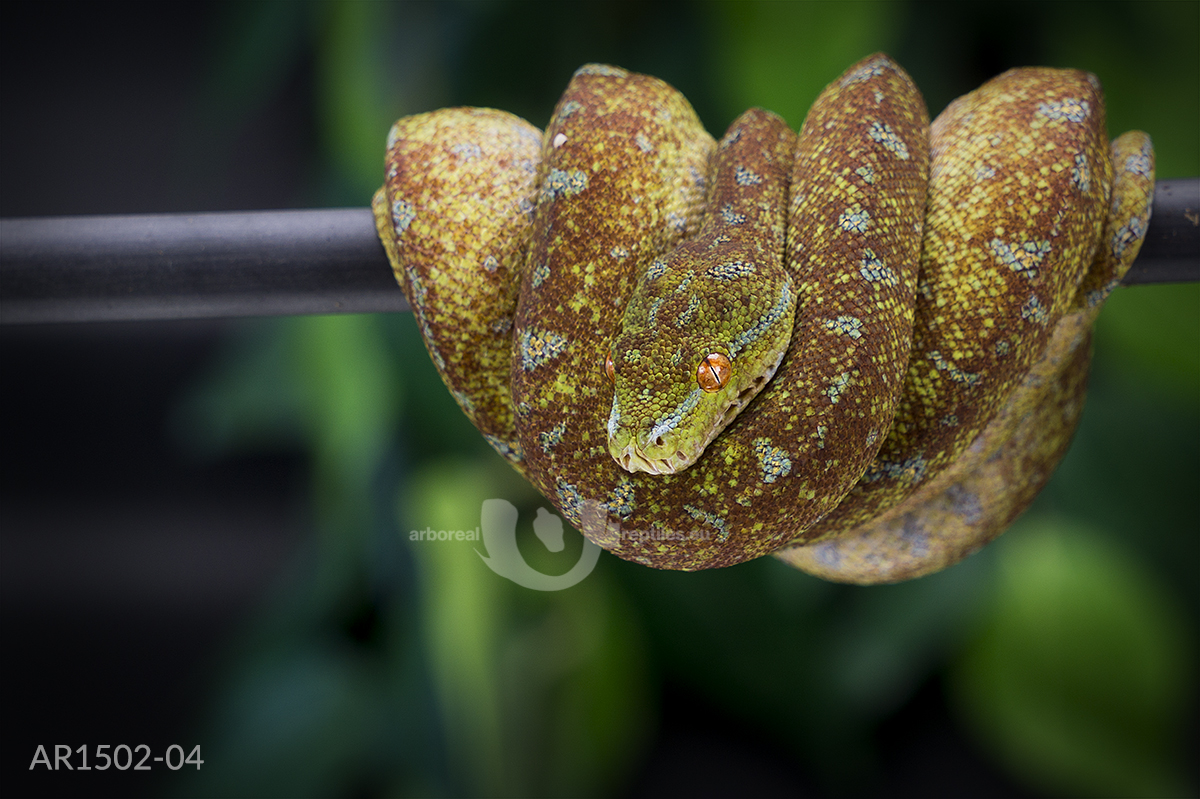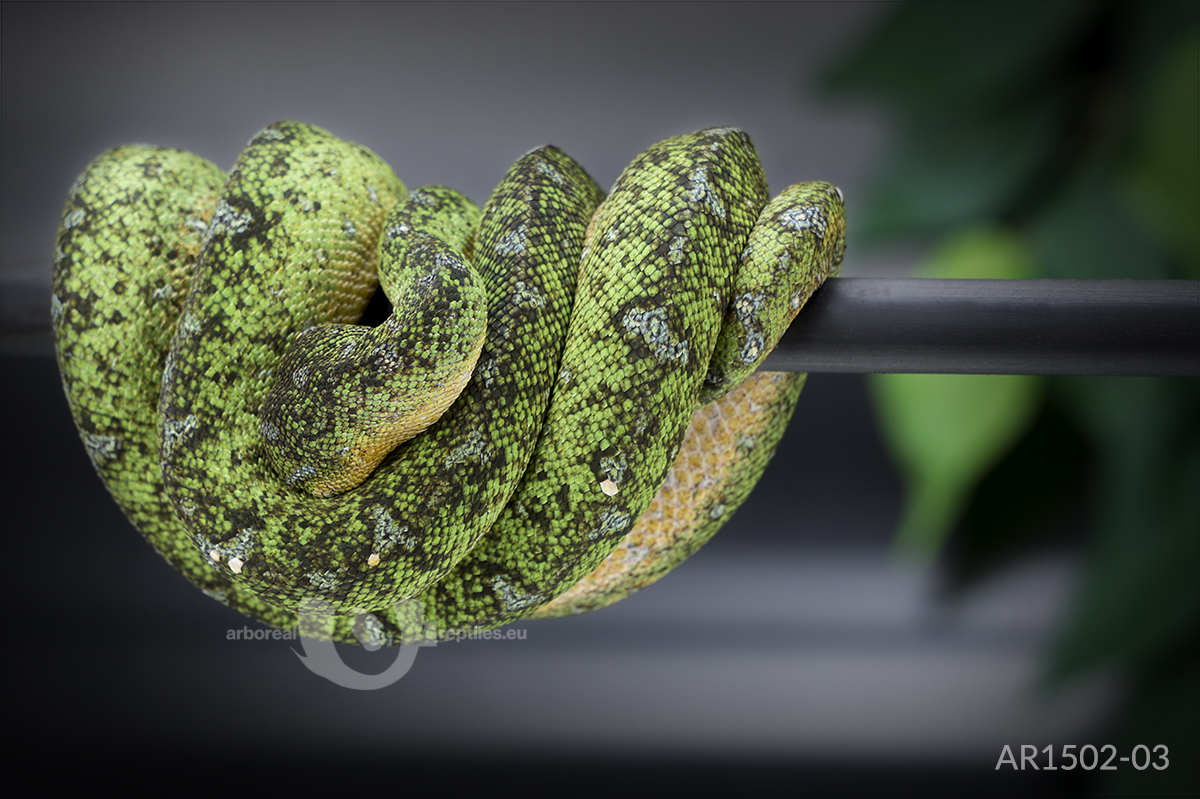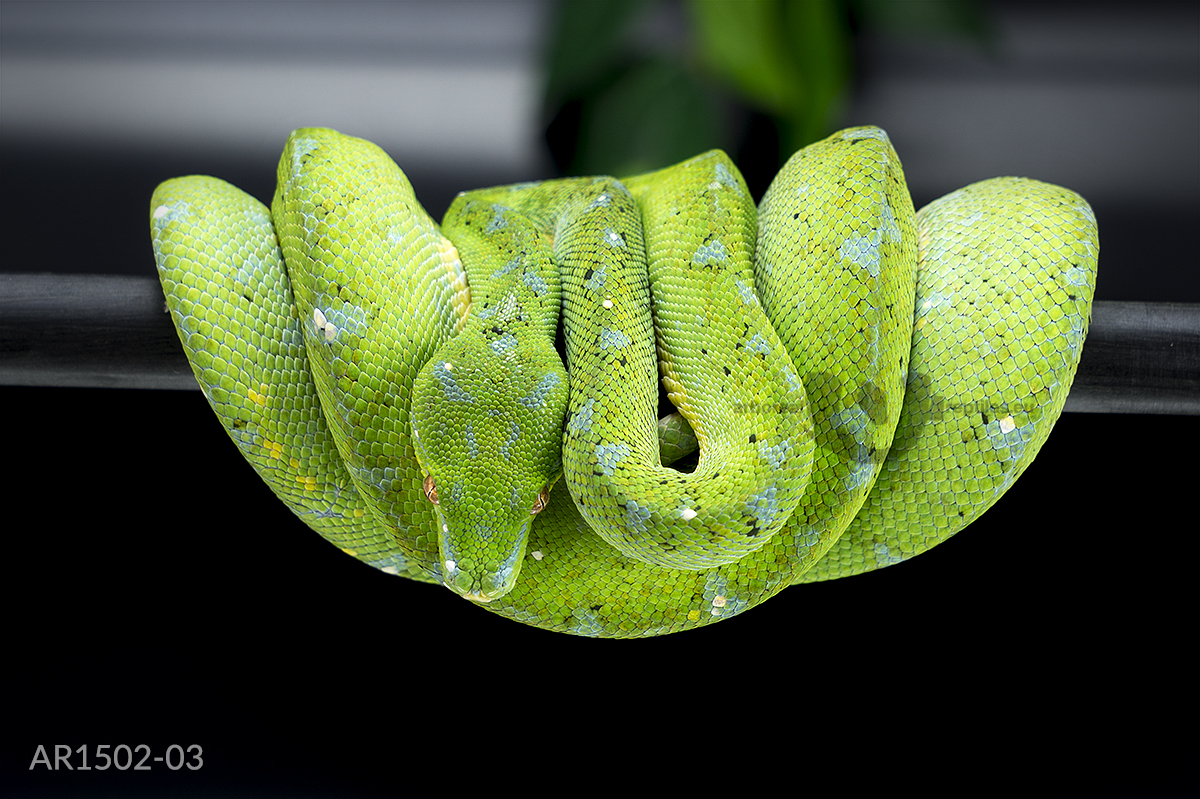Nereus x Amphitrite AR1502
| clutch number: | AR1502 |
| ovulation: | not seen |
| POS: | 2015-05-24 |
| egg deposition: | 2015-06-13 |
| number of eggs: | 9 + 3 [Ø 13,14g] |
| hatchdate: | 2015-07-30 to 2015-07-31 |
| hatchlings: | 7 [Ø 7,45g] |
| neo color: | 2 maroon | 5 yellow |
| breeder: | Arboreal Reptiles |
The sire is Nereus (NE08-01). His high percentage of blue is gaining more and more. He already produced juveniles in 2013, which have also gained blue by now (e.g. NL13-02). The dam Amphitrite (AM10-01) has a hormonal caused light blue basic coloration with noticeable intense blue dorsal markings. As far as we know, she had a clutch at her former owner, he didn't incubate it. Black scales can be found on the male’s neck and as little groups distributed over the female’s body. Besides the female has a dark dorsal line with single white scales along it.
In February we put them together. The male started immediately to court her, followed by several copulations. The female stopped eating directly after their first contact.
At the end of April we noticed an increase of the female’s volume. Also her blue was getting more intense. Sadly we don’t know the exact ovulation date. The post ovulation shed was on the 2015-05-24.
One and a half weeks ahead the egg deposition she started to get uncomfortably. The last two days ahead she stayed in the laying box the whole time.
On the 2015-06-13 early in the morning we found the female laying her eggs. Until the evening she seemed to has rebuilt enough because she defended the eggs with great passion. Although the female is normally very calm.
We found 12 loose eggs, three of them were slugs. The shells of the other nine were irregularly, at some parts very thick. We put all of the nine fertilized ones in the incubator.
Five days after the egg deposition the female took her first, small meal.
At day 48 the first neonate cut itself its way into life. A few eggs had glassy spots, so we decided to cut all of them the same day. At day 49 six of the other neonates hatched.
The average hatch weight was 7.45 gram [the lightest weighed 6.65g, the heaviest 8.30g].
Sadly one juvenile, which had been alive at the time we cut the egg, didn’t hatch. The yellow neonate was completely developed and separated from the egg. The ninth egg contained a dead, red juvenile, which was still connected with its egg.
Both eggs had been noticeably smaller and lighter than the others. Until day 49 the egg of the yellow neonate had grown and gained weight, so that there was no difference to the others any more. The egg of the red neonate stayed smaller and lighter.
